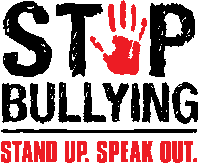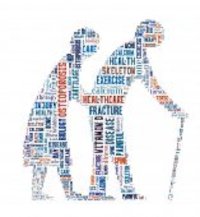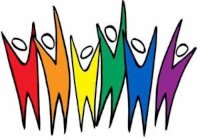
Resources Page updated
Resources
RESOURCES PAGE
BULLYING
 According to a study in 2011 by the National Center for Education Statistics and Bureau of Justice Statistics, 20% of U.S. students between grades 9-12 have experienced bullying. Bullying was identified by the Center for Disease Control and Department of Education as a perceived power imbalance through repeated unwanted aggressive behavior from an individual or individuals. Both indirectly and directly, perpetrators use physical, verbal, and relational abuse to harm individuals, resulting in depression, anxiety, isolation, and even suicide from victims. Despite intervention from bystanders, bullying is still an ongoing concern both in schools and workplaces.
According to a study in 2011 by the National Center for Education Statistics and Bureau of Justice Statistics, 20% of U.S. students between grades 9-12 have experienced bullying. Bullying was identified by the Center for Disease Control and Department of Education as a perceived power imbalance through repeated unwanted aggressive behavior from an individual or individuals. Both indirectly and directly, perpetrators use physical, verbal, and relational abuse to harm individuals, resulting in depression, anxiety, isolation, and even suicide from victims. Despite intervention from bystanders, bullying is still an ongoing concern both in schools and workplaces.
Huffpost: Rude vs. mean vs. Bullying: defining the differences
Teens health: Dealing with Bullying
National bullying prevention center: Questions anwered
Bullying Statistics: Cyberbullying Statistics
American SPCC (American society for the positive care of children): Bullying Statisitics
Eschooltoday: Your facts and basic tips on bullying
Tackle Bullying
Education Corner: Bullying epidemic: Facts, statistics and prevention
Scholastic: Teasing and bullying: No laughing matter
Consumer Information: Help prevent cyberbullying
Identify and Prevent Bullying in School
Domestic Violence

Elder Abuse

What is Elder Abuse?
National Council on Aging
National Committee for the Prevention of Elder Abuse
National Institute on Aging: Elder Abuse
World Health Organization: Elder Abuse
NCEA (National Center on Elder Abuse)
SAGE: Elder Abuse and Fraud
GAO (U.S. government accountability office: Elder Abuse)
Fidelity: Prevent financial Elder Abuse
LGBT Abuse
 Abusive partners in LGBT relationships use physical, sexual, and emotional abuse, in addition to financial control and isolation to control their partners. By maintaining power, abusers use threats and justification as tactics to continue the abuse. Some other tactics include intimidation, blame, privilege, and economic abuse in order to feel dominant and powerful in the relationship. According to the Human Rights Campaign, 40 percent of gay men experience sexual violence while only 21 percent of heterosexual men experience it.
Abusive partners in LGBT relationships use physical, sexual, and emotional abuse, in addition to financial control and isolation to control their partners. By maintaining power, abusers use threats and justification as tactics to continue the abuse. Some other tactics include intimidation, blame, privilege, and economic abuse in order to feel dominant and powerful in the relationship. According to the Human Rights Campaign, 40 percent of gay men experience sexual violence while only 21 percent of heterosexual men experience it.
If you or someone you know has been physically or sexually assaulted, please call or visit the LGBT-friendly resources listed below:
Human Rights Campaign
National Sexual Assault Hotline: 1-800-656-4673
The Anti-Violence Project Hotline: 1-212-714-1124
Gay Men’s Domestic Violence Project Hotline: 1-800-832-1901
MCEDV (Maine Coalition to End Domestic Violence): Abuse in LGBT relationships
NCADV (National Coalition Against Domestic Violence): Domestic Violence and Lesbian, Gay, Bisexual, and Transgender Relationships
Center for American Progress: Domestic Violence in the LGBT Community
Encyclopedia of social work: Domestic Violence in the LGBT Community
End the fear: Same-sex domestic abuse
Domestic abuse/sexual Assault Service: Domestic Violence-Impact on LGBT Victims
LGBT Bucks: Domestic Abuse
Walter Shelter Inc, Inc: Domestic Violence and Lesbian, Gay, Bisexual and Transgender Relationships
Safe House: Power and Control Wheel for LGBT Relationships
SIBLING ABUSE

University of Michigan: Sibling Abuse
Sibling Abuse Help Guide
Sibling Abuse: The Unspoken Threat
AAMFT (American Association for Marriage and Family Therapy): Sibling Violence
Counseling Today: Helping children and families address and prevent sibling abuse
The American Acadademy of Experts in Traumatic Stress: Understanding what sibling abuse is
NOBullying.com: The Real Truth About Sibling Abuse
Hope4Siblings
PDF chapter from The Hidden Feelings of Motherhood: The LongShadow Adult Survivors of Childhood Abuse
Professional School Counseling: Hidden Abuse within the Home: Recognizing and Responding to Sibling Abuse
Healthy Place: Sibling Abuse as a result of Childhood Mental Illness
Learning Network: Sibling Violence
SUICIDE PREVENTION
Active Minds
American Foundation for Suicide Prevention
Chatzy.com
Guide To Suicide Prevention
Fighting Suicide and Depression In College
It Gets Better
National Suicide Prevention Lifeline: 1-800-273-8255, chat
Spanish line (1-888-628-9454)
Samaritans
Stop Soldier Suicide: (844-889-5610)
Mobile Apps
A Friend Asks (android, iOS)
MY3 (android, iOS)
Ask & prevent suicide (android, iOS)
Suicide Crisis Support (android)
HELP prevent suicide (android, iOS)
Stay alive (android, iOS) UK-based
Operation reach out (iOS) veterans & military family
Hotlines
1-800-suicide (1-800-784-2433)
text telephone (1-800-799-4889)
military veterans suicide hotline (1-800-273-talk) [press 1]
suicide hotline in Spanish (1-800-273-talk) [press 2]
LGBT youth suicide hotline (1-866-4-U-Trevor)





